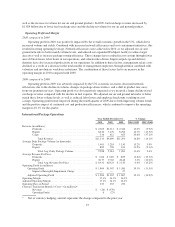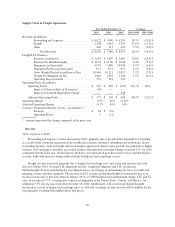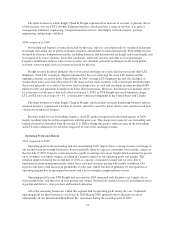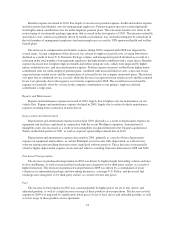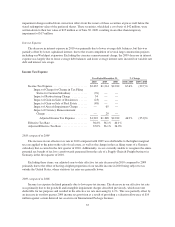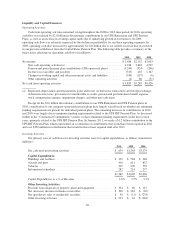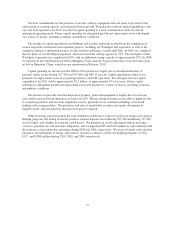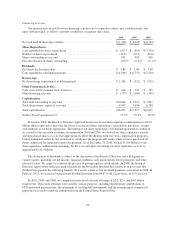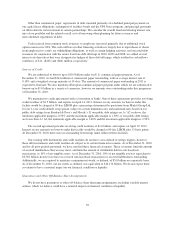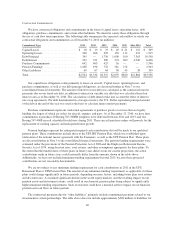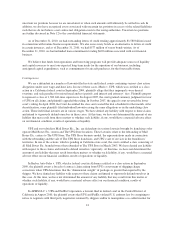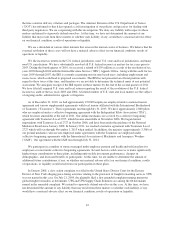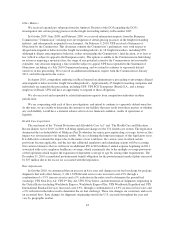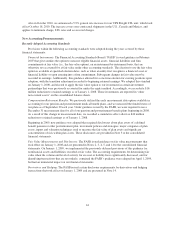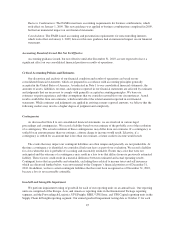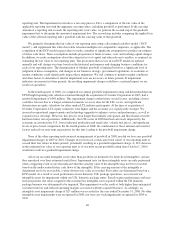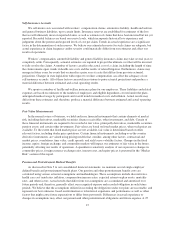UPS 2010 Annual Report Download - page 49
Download and view the complete annual report
Please find page 49 of the 2010 UPS annual report below. You can navigate through the pages in the report by either clicking on the pages listed below, or by using the keyword search tool below to find specific information within the annual report.We have commitments for the purchase of aircraft, vehicles, equipment and real estate to provide for the
replacement of existing capacity and anticipated future growth. We generally fund our capital expenditures with
our cash from operations. In 2010, we reduced capital spending to a level commensurate with our current
anticipated operating needs. Future capital spending for anticipated growth and replacement assets will depend
on a variety of factors, including economic and industry conditions.
The decline in capital expenditures on buildings and facilities primarily resulted from the completion of
several large hub construction and expansion projects, including our Worldport hub expansion, as well as the
expansion and new construction projects at other facilities in Europe, Canada and China. In 2009, we completed
the first phase of our Worldport expansion, which increased the sorting capacity by 15%. The final phase of the
Worldport expansion was completed in 2010, with an additional sorting capacity of approximately 20%. In 2008,
we opened our new international air hub in Shanghai, China, and also began construction of our new intra-Asia
air hub in Shenzhen, China, which became operational in February 2010.
Capital spending on aircraft over the 2008 to 2010 period was largely due to scheduled deliveries of
previous orders for the Boeing 767-300 and 747-400, and MD-11 aircraft. Capital spending on vehicles was
primarily for replacement assets in our package delivery and LTL operations. We anticipate that our capital
expenditures for 2011 will be approximately $2.2 billion, or approximately 4% of revenue. Future capital
spending for anticipated growth and replacement assets will depend on a variety of factors, including economic
and industry conditions.
The increase in proceeds from the disposal of property, plant and equipment is largely due to real estate
sales and the proceeds from insurance recoveries in 2010. The net change in finance receivables is primarily due
to customer paydowns and new loan origination activity, primarily in our commercial lending, asset-based
lending and leasing portfolios. The purchases and sales of marketable securities are largely determined by
liquidity needs, and will therefore fluctuate from period to period.
Other investing activities include the cash settlement of derivative contracts used in our energy and currency
hedging programs, the timing of aircraft purchase contract deposits on our Boeing 767-300 and Boeing 747-400
aircraft orders, and changes in restricted cash balances. We maintain an escrow agreement with an insurance
carrier to guarantee our self-insurance obligations, and we deposited $95 and $191 million in cash collateral with
the insurance carrier under this agreement during 2009 and 2008, respectively. We received (paid) cash related to
purchases and settlements of energy and currency derivative contracts used in our hedging programs of $111,
$117, and $(208) million during 2010, 2009, and 2008, respectively.
37


